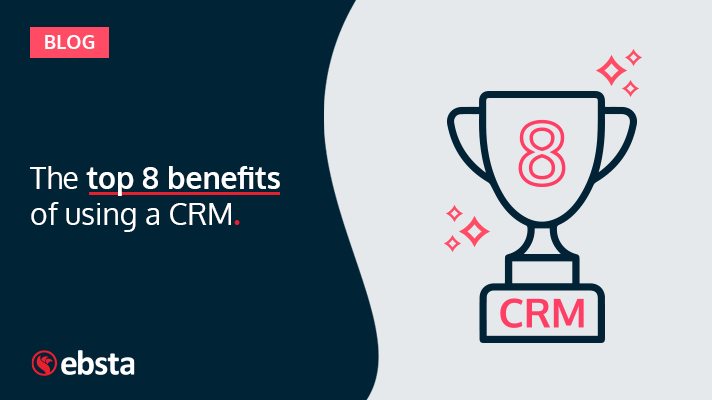Share this article
Learn from the brightest minds how to predictably and efficiently grow revenue.
Related Content
B2B Sales Benchmarks: 2023 H1 Update
The latest update from the 2023 B2B Sales Benchmarks analysis of over $37bn in pipeline.
How to improve AE quota attainment (according to data)
23% of reps are contributing 83% of revenue. Here's how to solve it (with data)
How to close more target accounts with deal qualification
Sales methodologies guide sellers on how to engage prospects at various sales stages. At the very first stage, qualification methodologies (such as Challenger, BANT, MEDDPICC®, etc.) have long been established to create structure and process when opportunities enter the pipeline. Ultimately, the goal is to create consistency at different stages, ensuring sellers follow best practices…

The top 8 benefits of using CRM
What is CRM?
CRM stands for customer relationship management and is a software tool that is a central hub for tracking all your interactions with leads all the way till they become a customer.
It tracks everything you could possibly need to know about a customer:
- Telephone
- Website
- Specific notes on the customer
- All interactions with said customer
- Who made those interactions
Why do you need CRM?
A CRM allows you to build and nurture relationships with customers.
Did you know that the more relationships you build, the more likely your deal is to close?
In fact, we analyzed 1.6 million opportunities and found that building 4 to 6 relationships led to a 19% increase in win rates compared to those with just 1 to 3.
With all this information at your fingertips (and everyone else at your company’s fingertips), you have a recipe for success.
Top 8 benefits of using CRM
Saves time
Reps currently spend only one-third of their time talking to prospects.
CRM automates a lot of repetitive, manual tasks that take up a lot of your sales reps’ time such as updating contact information, calendar management, and data entry.
It gives time back to your reps so they can:
- Sell
- Begin to personalize their messaging for each lead, prospect, opportunity, or customer
- Focus on hitting their sales goals
Removes human error
ZoomInfo reported that 54% of B2B businesses say poor quality data is their biggest challenge.
As many of these manual tasks are automated now, it removes room for any dirty data.
This is any incorrect data that is giving you an inaccurate picture of your pipeline.
Improved pipeline visibility
You can now effectively track opportunities from start to finish.
Improved pipeline visibility means managers can easily spot deals at risk and provide their reps with the support they need to get these deals back on track.
Increased collaboration
Everyone across your business has access to the CRM, therefore has access to the same data.
Nothing can slip through the cracks.
We looked at it from a sales manager’s perspective in the last benefit. So now let’s take a look from the C-suite executives’ perspective.
When we think about traditional forecasting, usually as data is passed from the sales rep to the C-suite a lot of the facts are lost in translation which results in an inaccurate forecast.
Using a CRM creates alignment and contributes to a more accurate forecast as the data speaks for itself.
Leverage data from CRM to optimize processes
As mentioned before, CRM tracks opportunities from when they are a lead to when they convert to a closed-lost or closed-won.
You can then leverage this data to better qualify prospects.
If you analyze all the deals you have successfully closed and notice there is a common pattern between all these companies, then you should start to target the same types of companies.
Another way you can leverage this data is by setting benchmarks.
For example, if it usually takes you X amount of days to close a deal and an opportunity is stuck in a stage too long, this is a cause for concern.
Shorter sales cycles and improved win rates
Companies who update their CRM have 23% higher win rates.
What are you waiting for? Get updating!
You can pinpoint exactly where things usually go wrong and work out those kinks.
Smoothing out all these small kinks adds up! This is known as marginal gains.
Marginal gains are tiny improvements that compound over time and result in a big overall increase.
Upsell & Cross-sell
CRM data allows you to better understand your customers.
Salespeople can easily identify when upselling and cross-selling opportunities arise and can make the most out of each and every opportunity.
Improves the customer experience
Both sales teams and customer success can support the customer in a more effective manner.
For example, if an SDR makes a note of a specific pain point of a prospect, the AE can tweak their pitch to be more focused on this pain point.
Then if the deal closes, customer success can guide them on features that solve this pain point.
This personalized approach to your customer not only improves their experience with your company but can improve customer retention rates too!
If you are already set up with a CRM, learn about these 4 dirty data types that are corrupting your CRM today.
